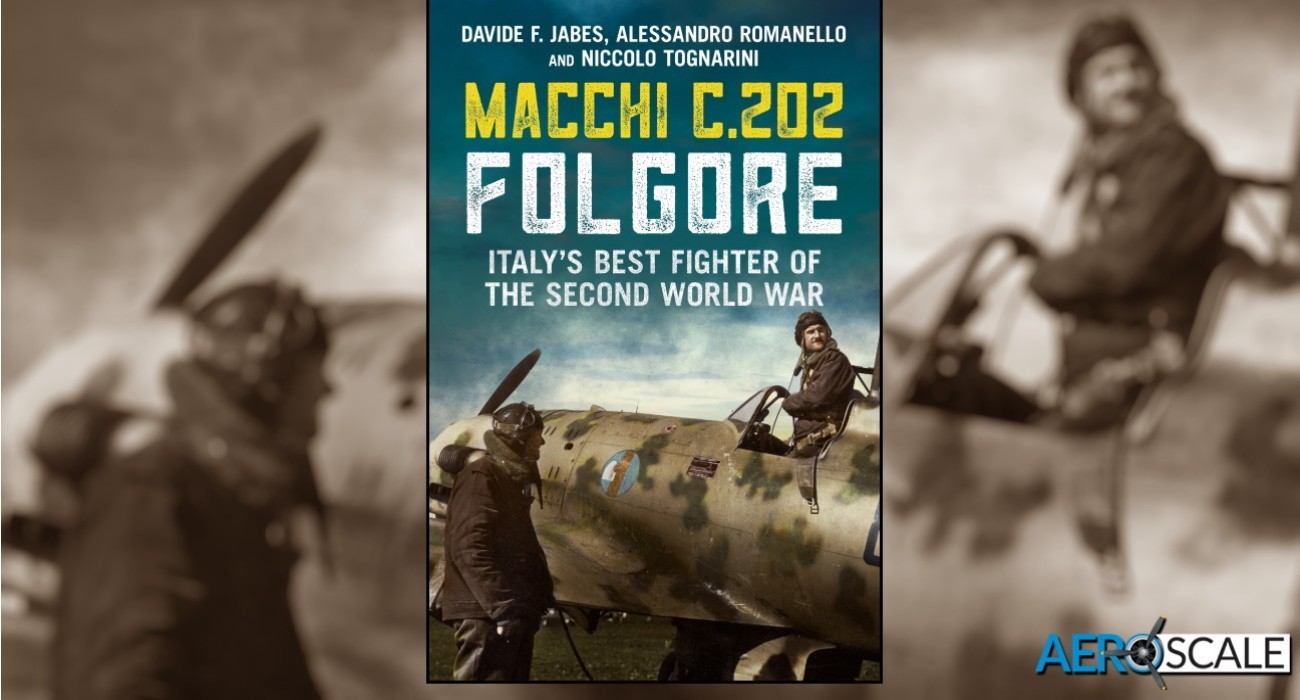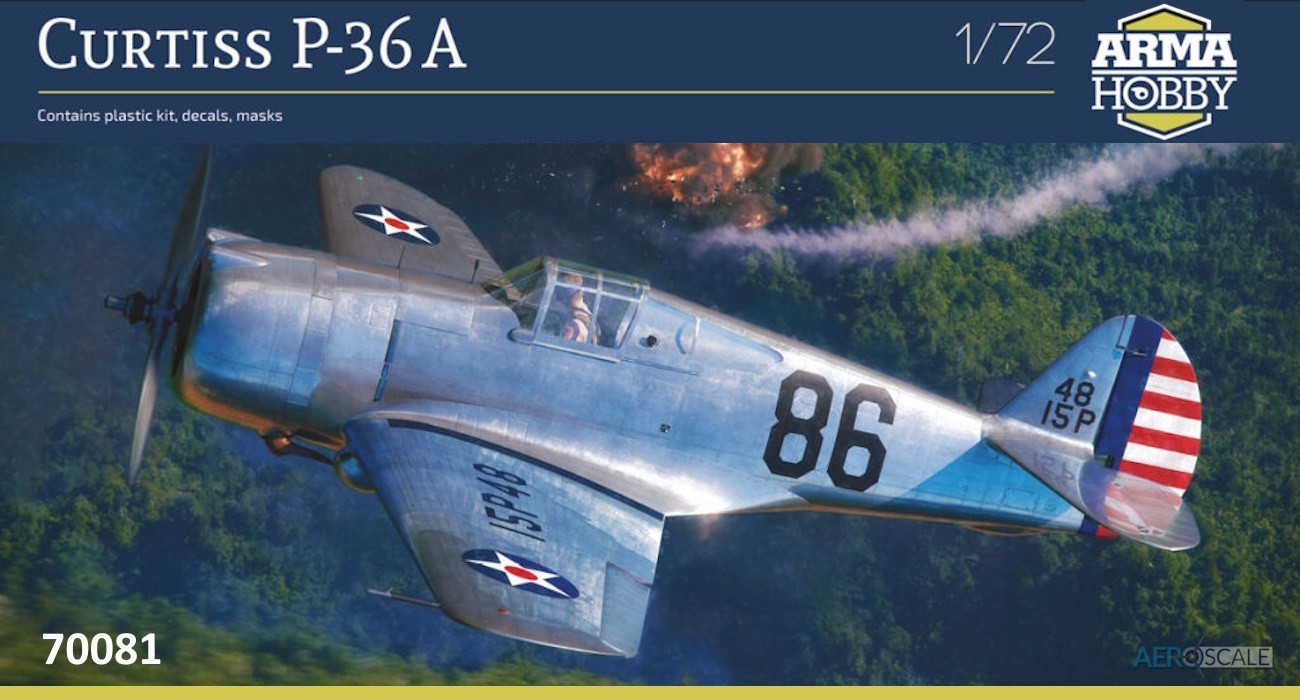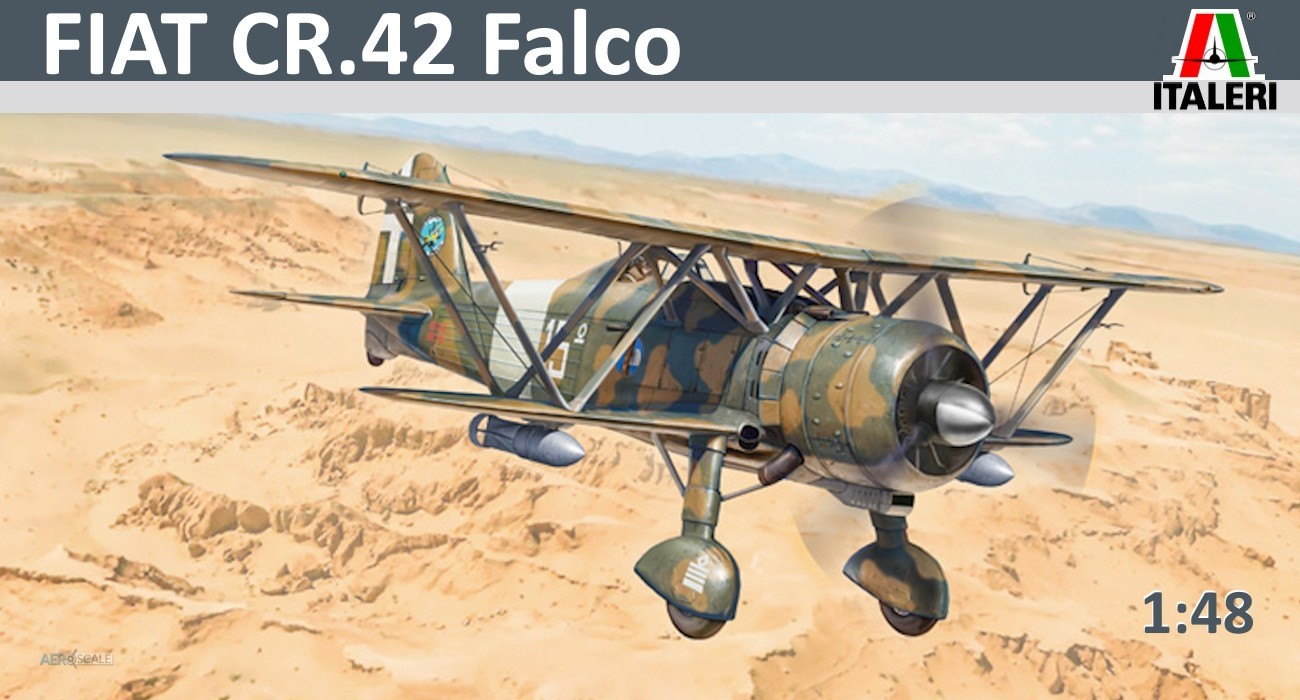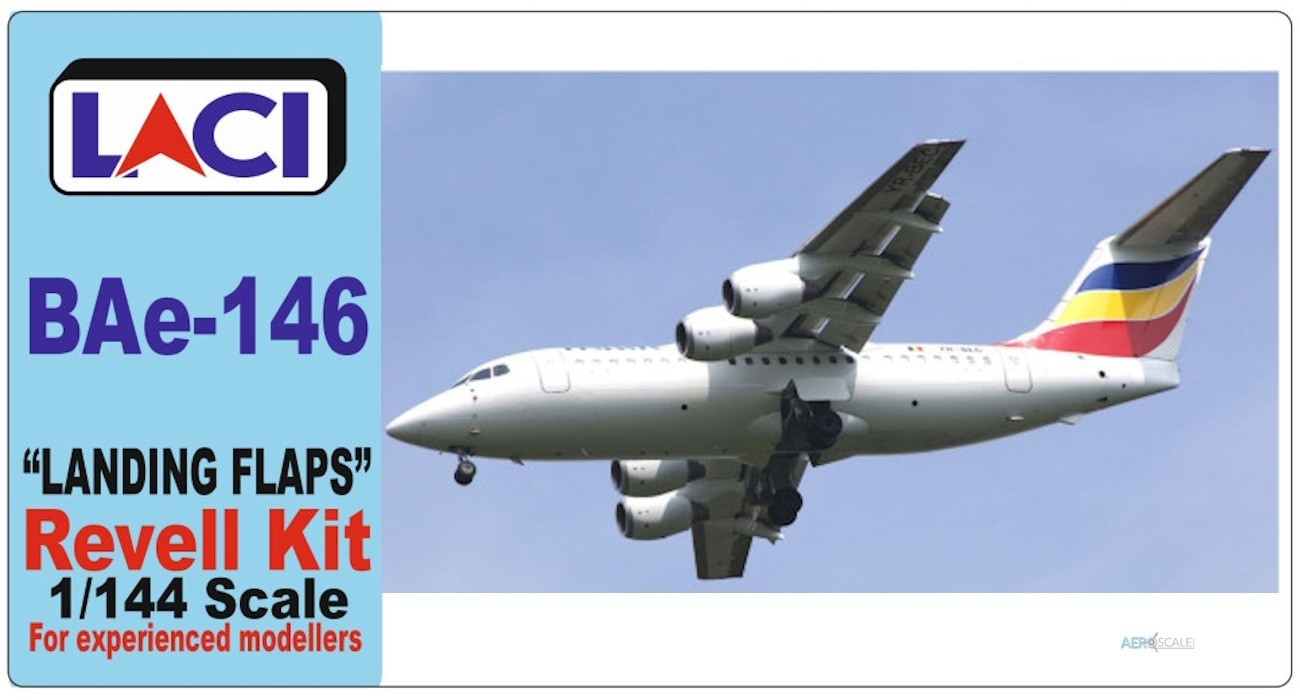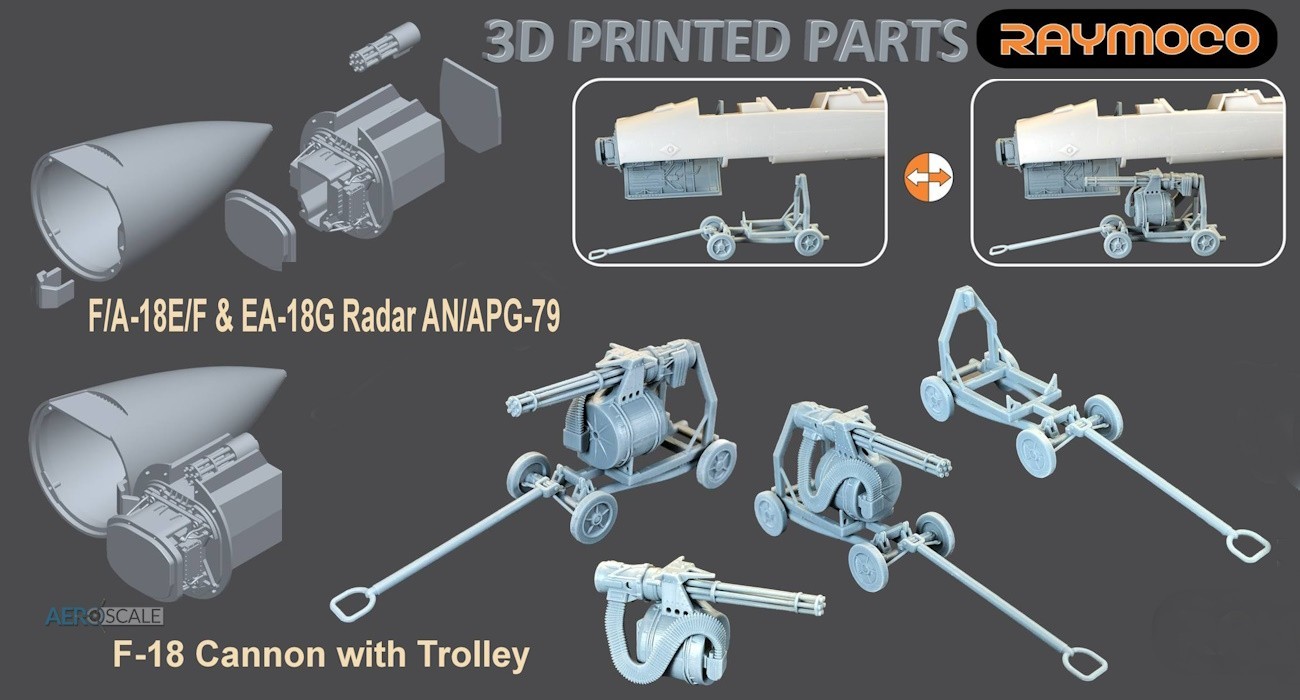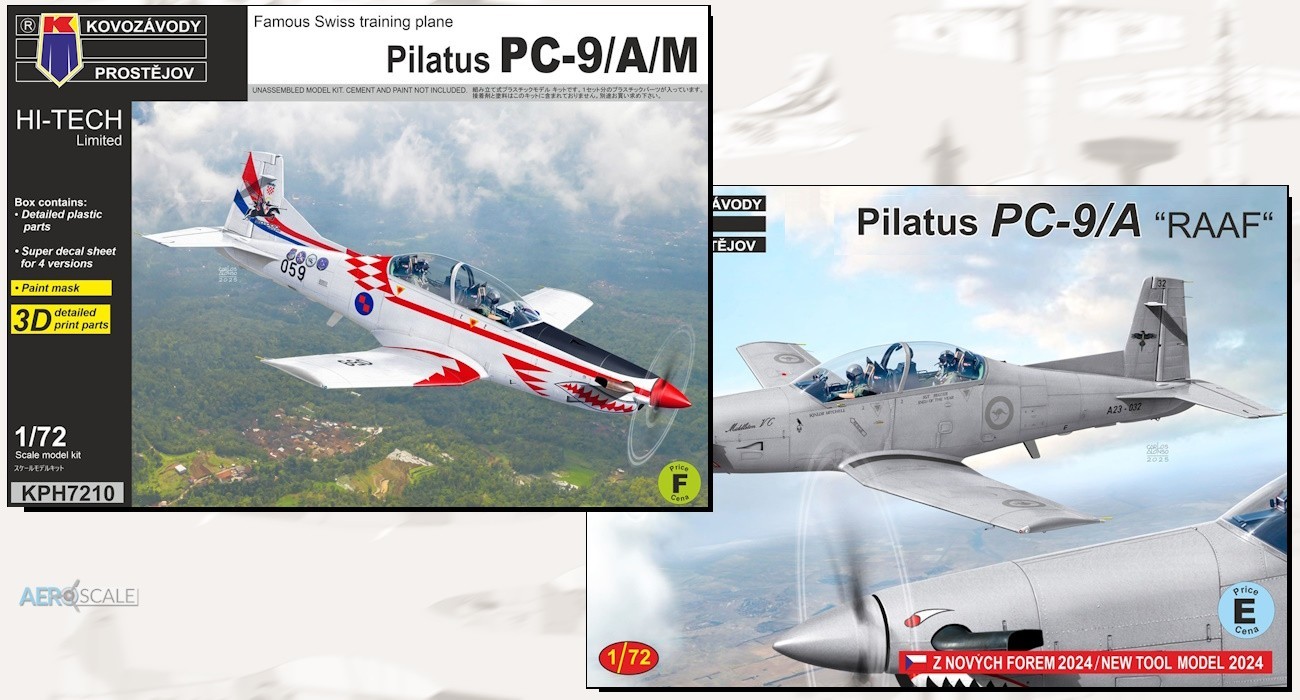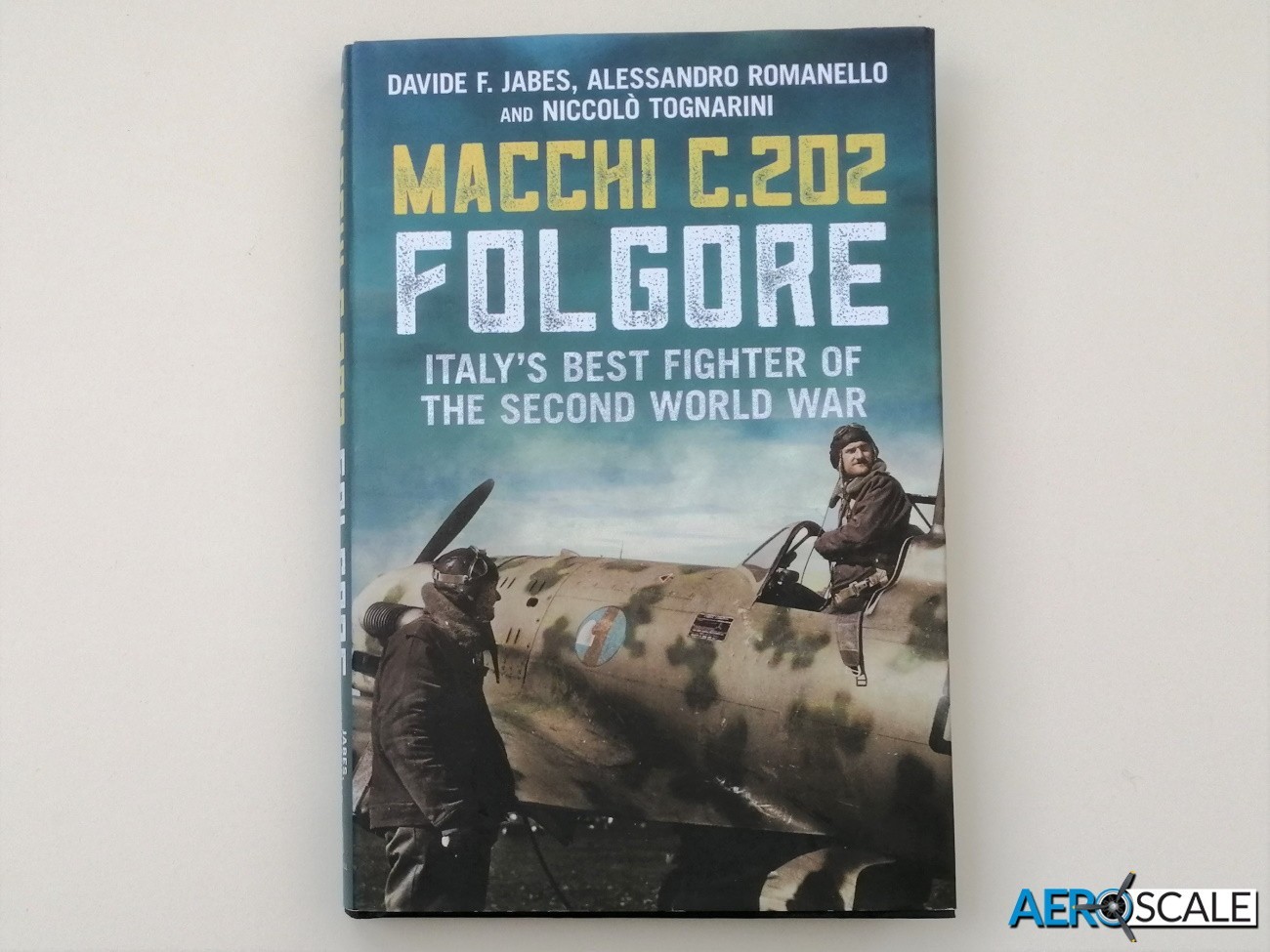
‘Macchi C.202 Folgore, Italy’s best fighter of WWII’ is a illustrated hard back book written by Davide F. Jabes, Alessandro Romanello and Niccolo Tognarini. The first part of the book provides some historical context looking at the key figures of the Italian government and aircraft industry up to the second world war. The proliferation of air competitions exemplified by the Schneider Trophy would fuel the advance in design and technology as well as feeding national pride. In the quest to win Governments and the military of the competing countries gradually increased their participation in the contest. The development of air power in Italy was becoming politicised in Italy. The men that headed the Regia Aeronautica: Mussolini, Italo Balbo, Guiseppe Valle and Fransco Pricolo as well as chief designer of AerMacchi Mario Castoldi are looked at in some depth.
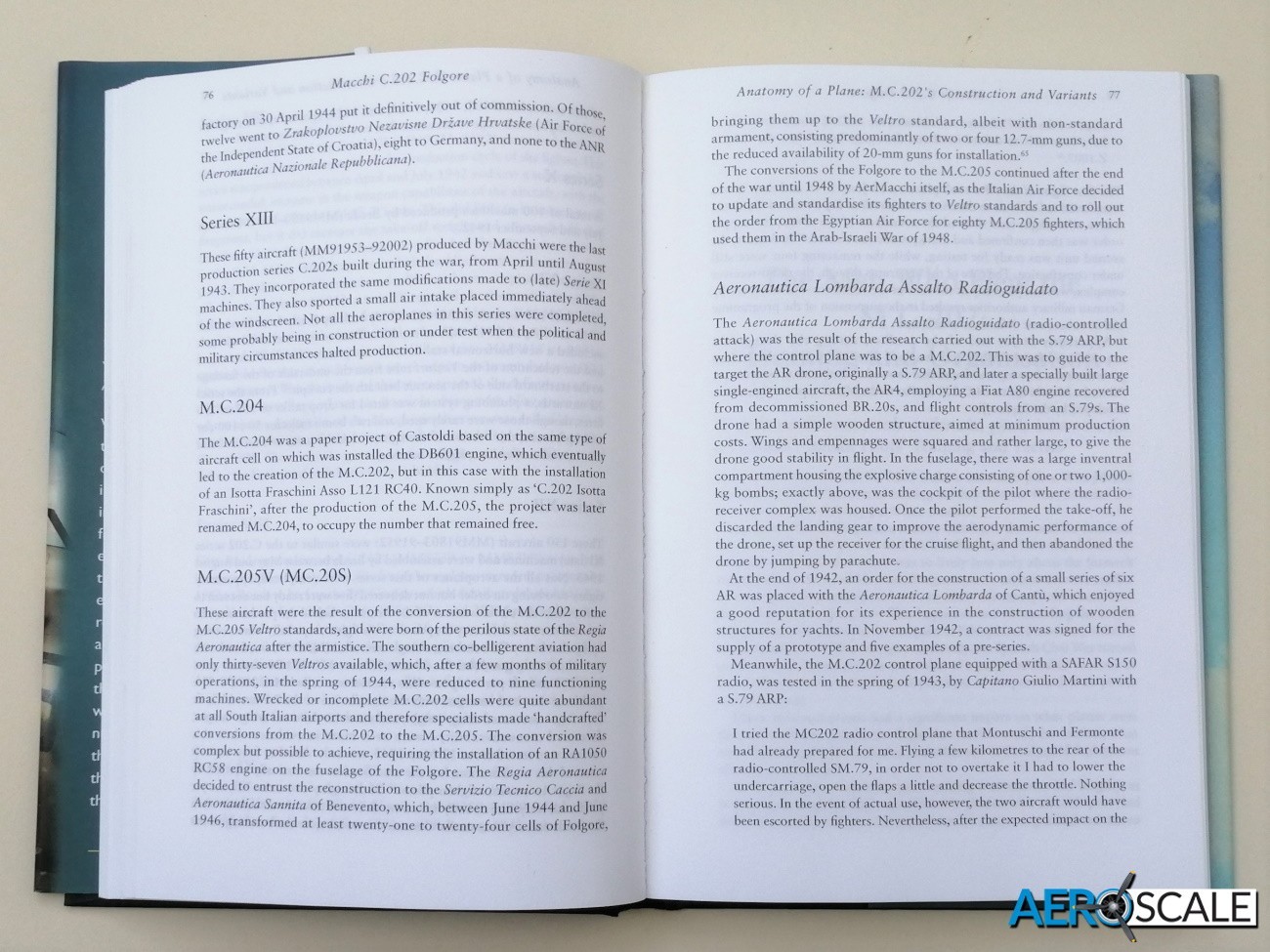
The predecessor of the MC.202: the MC.200 Saetta is studied in some detail, which is important as the MC.202 used much of the airframe of the MC.200. The Saetta was universally thought off as an inferior combatant compared to what the Allies had to offer. Summed up by the fact it was powered by a 870hp radial engine. Ironically the designer Castoldi previous design: the MC.72 sported a inline 3000hp FIAT AS6 engine.

The authors in looking at the MC.202 starts by examining the state of Italian industry and the response to pressure to become more industrialised. The response to demand on German, British and American aircraft manufacturing of aircraft is one of increasing performance and accelerating production. ‘War is a collective effort, and it’s an effort of numbers, of logistics, of resources and of industrial capacity’. Italy aircraft manufacturers were a long way from being able to follow that ethos. Aircraft were built by craftsmen and procurement was a huge problem. Even the use of the licence built DB601 engine, created more problems than solutions.
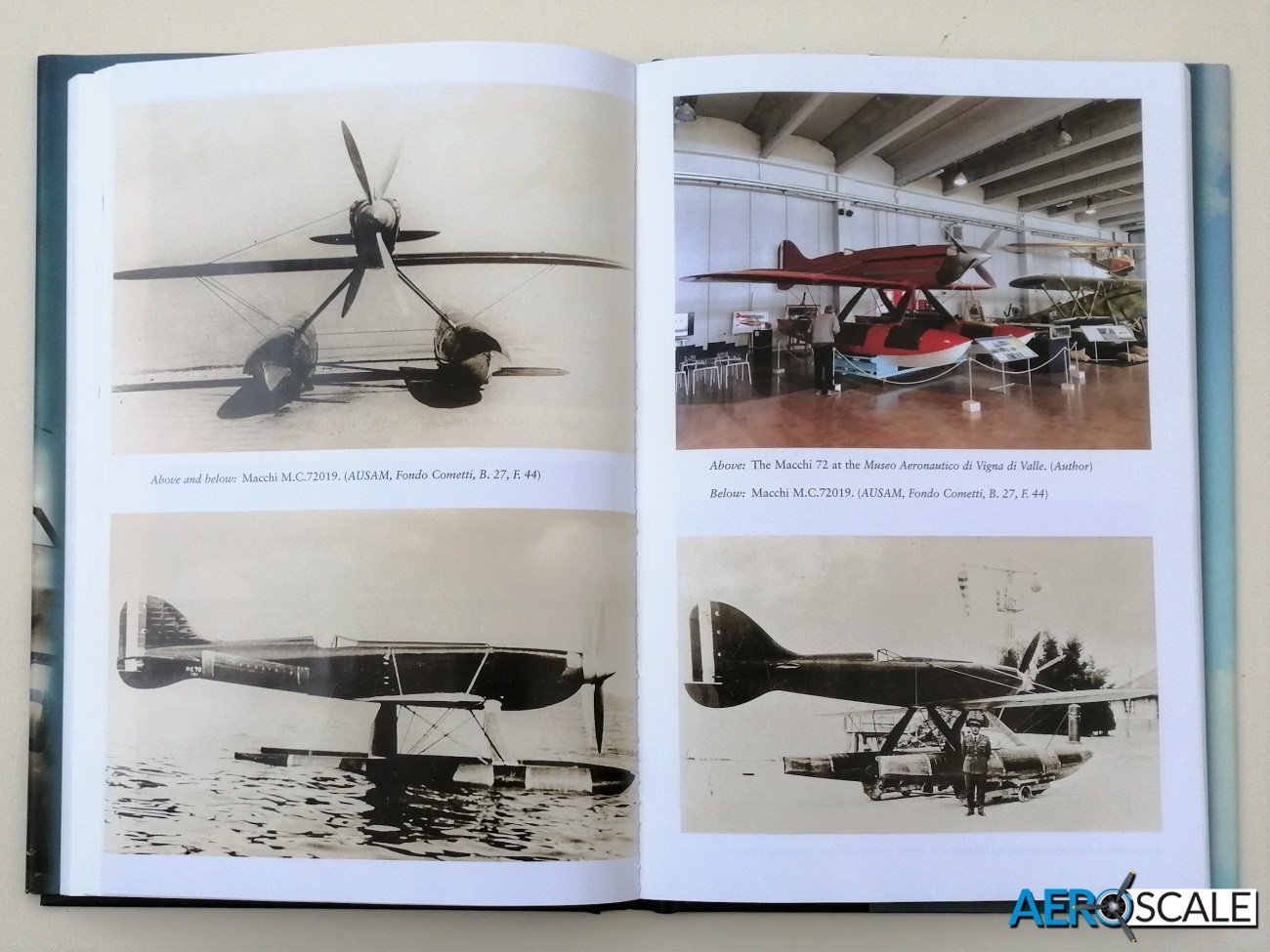
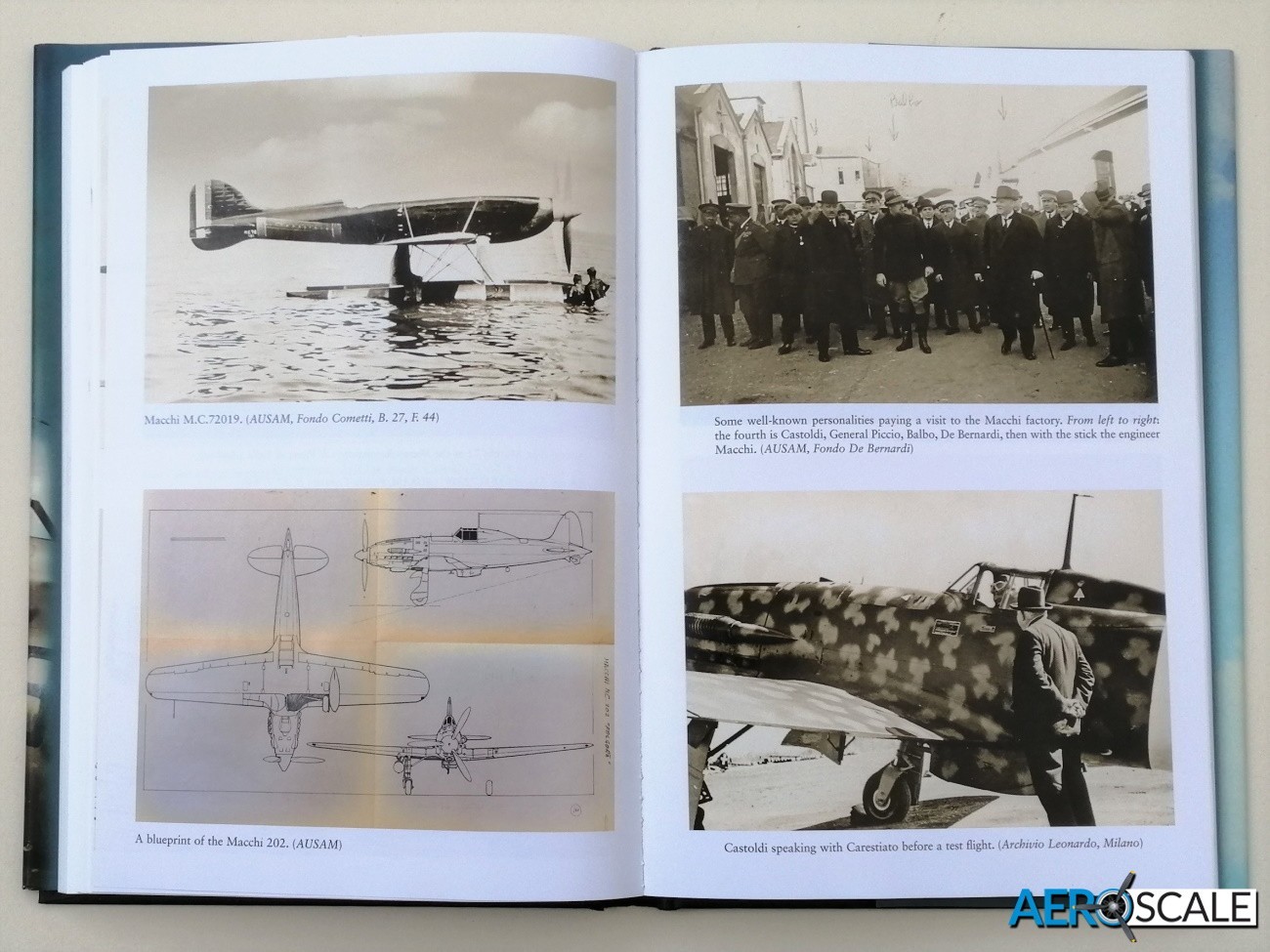
The authors lists the variants [Series] of the Folgore, thirteen in all and notes the differences between them. The paper project MC.204 is touched on as is the MC.205, which was the MC.202 powered by the FIAT built RA1050 RC58 engine. There also a brief mention of the MC.202 used as a ‘Radiguidatos’ for unmanned radio-controlled guided bombs.
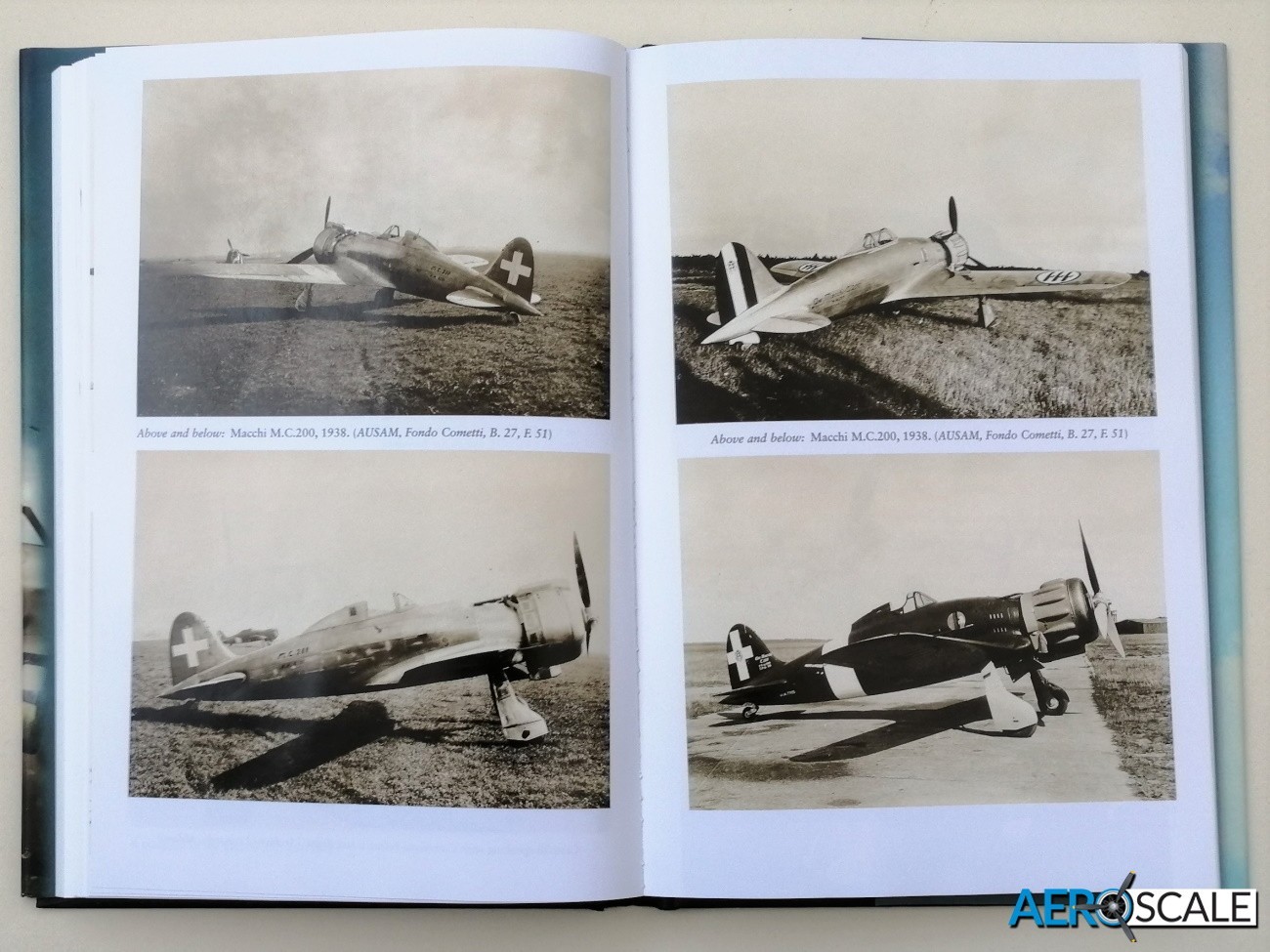
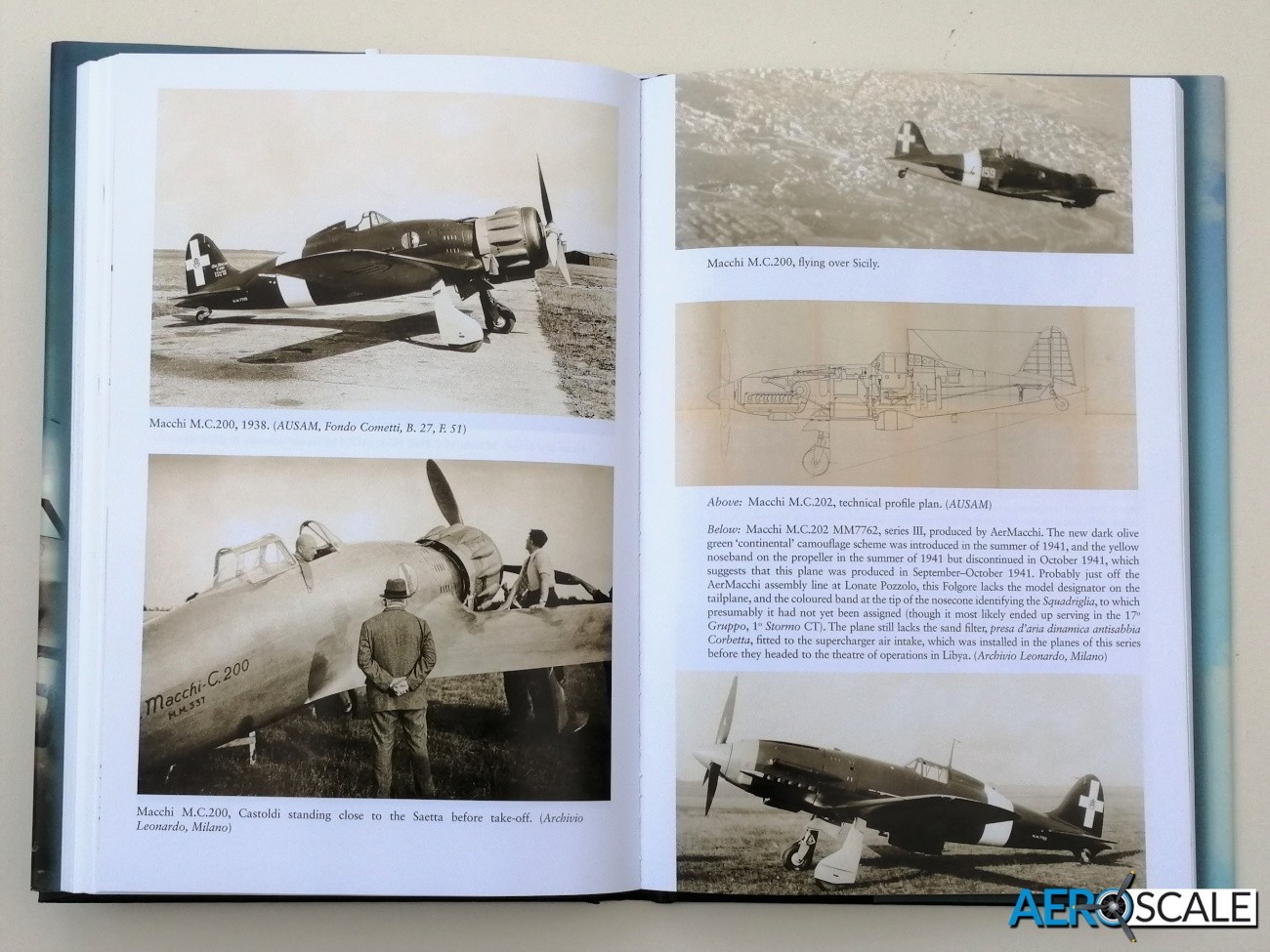
Of course, the men who flew the Folgore had their story to tell as did the pilots that flew against them. The authors cover the training, ethos and their experience on missions. There are many first-hand accounts from the Italian pilots, as well as observations from German and British pilots, which makes very interesting reading. It would seem that the Luftwaffe and RAF pilots were equally puzzled with the way Italian pilots firmly believed in the maintaining the aerial tactics and doctrine of WWI, rather than embracing more modern combat tactics. Amazingly in training marksmanship, navigation and instrument flying were rarely covered, although aerobatics was enthusiastically encouraged. The high morale of the Italian fighter pilot soon declined through the war as they were faced by the ever-improving foe. In fact, it was so bad at one time, pilots were paid bonuses for shooting down the foe.
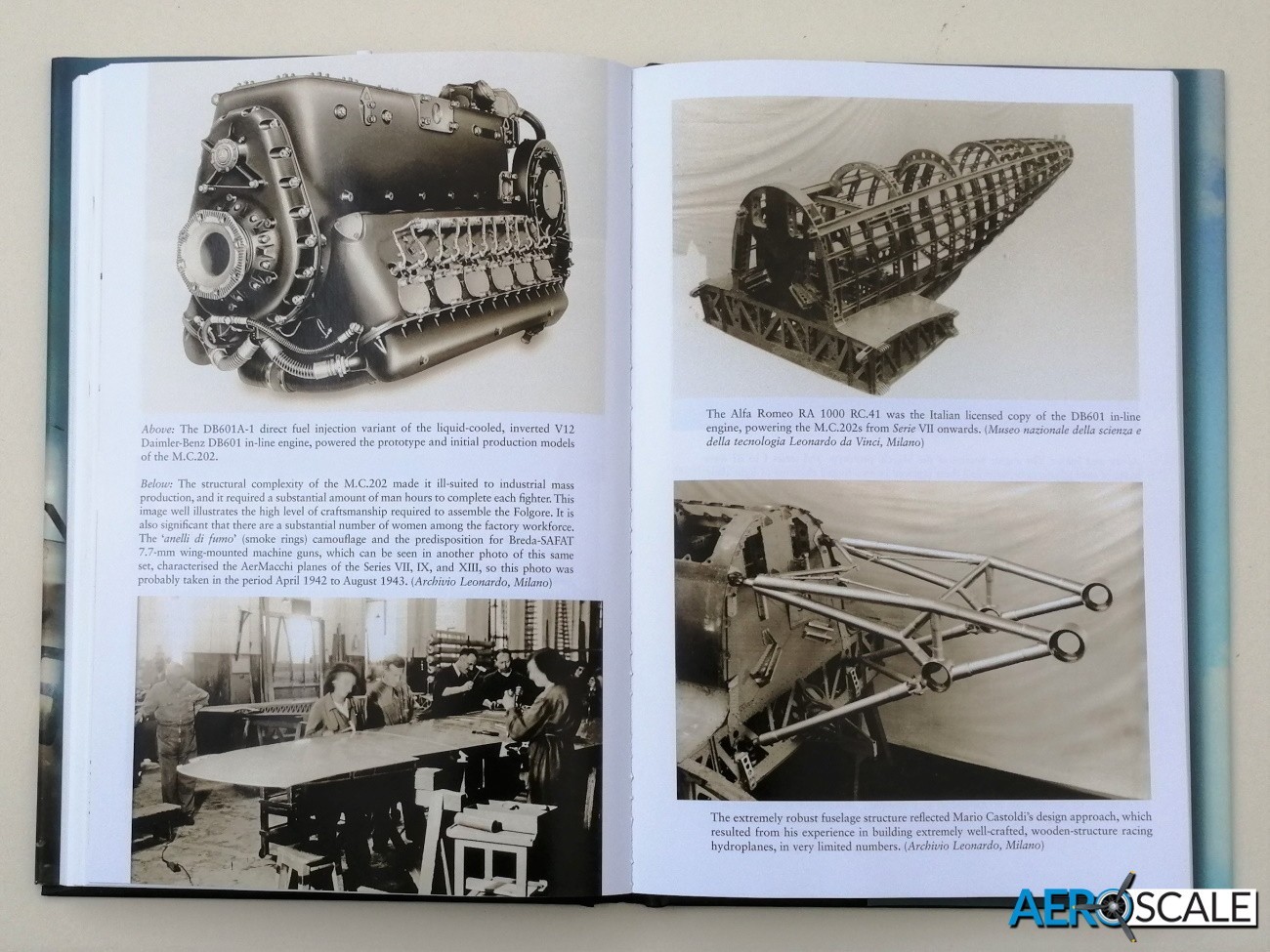
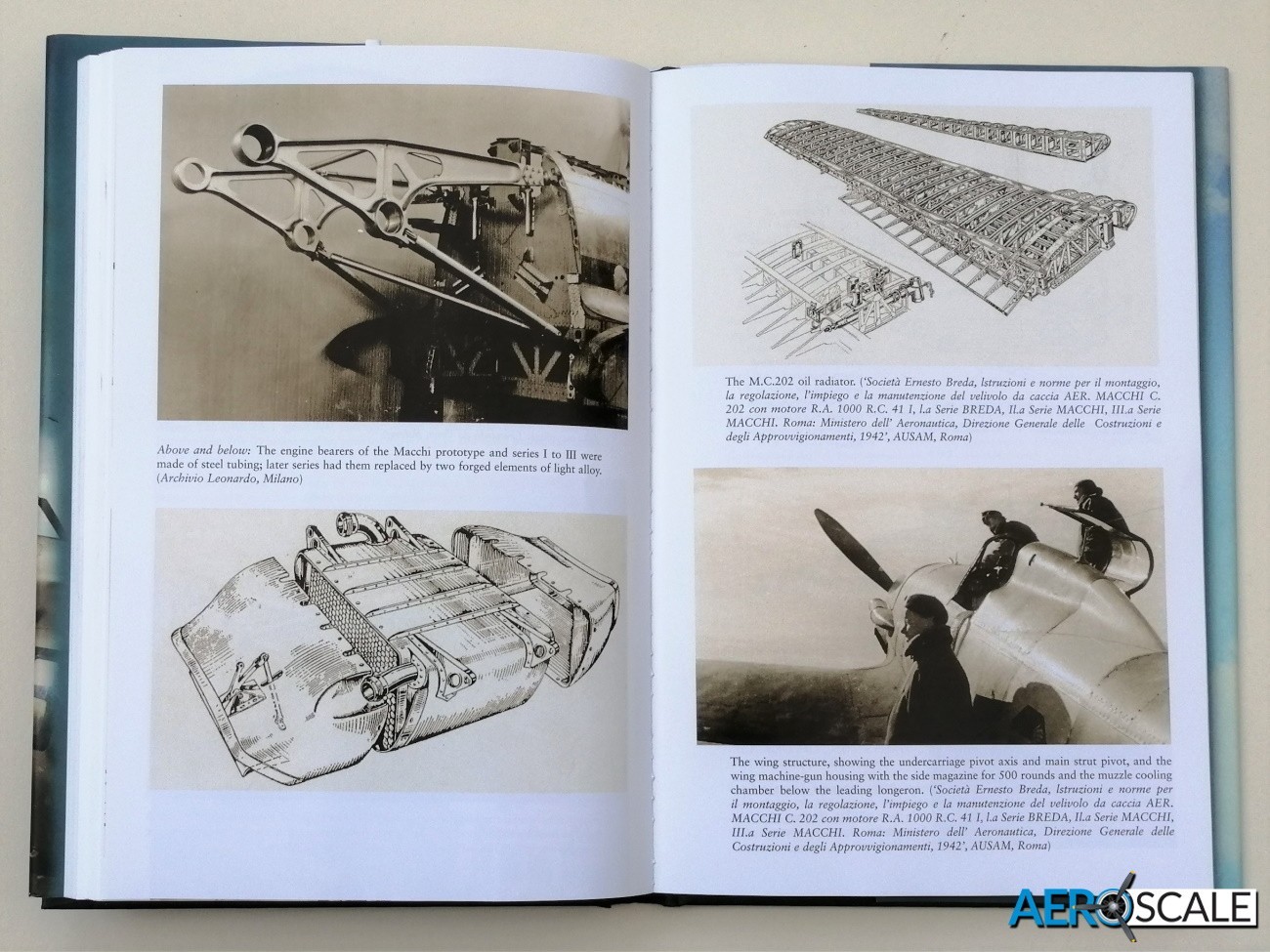
There is a chapter on the history of operations illuminated by the combat experience of the pilots of the MC.202. Theatres include north Africa, Malta, Russia, the Aegean and of course the defence of Italy. Towards the end of the war there was a sense of huge frustration and inevitability with the limitations of the Folgore armament attacking the heavily armed American four engine bombers and their escorts. By the Armistice only fifty-three MC.202’s was serviceable in the whole of Italy. By the time the Regia Aeronautica reformed after the Armistice the number was down into the twenties.
There are brief notes on the two Air Forces that operated the MC.202: Croatia and Egypt.
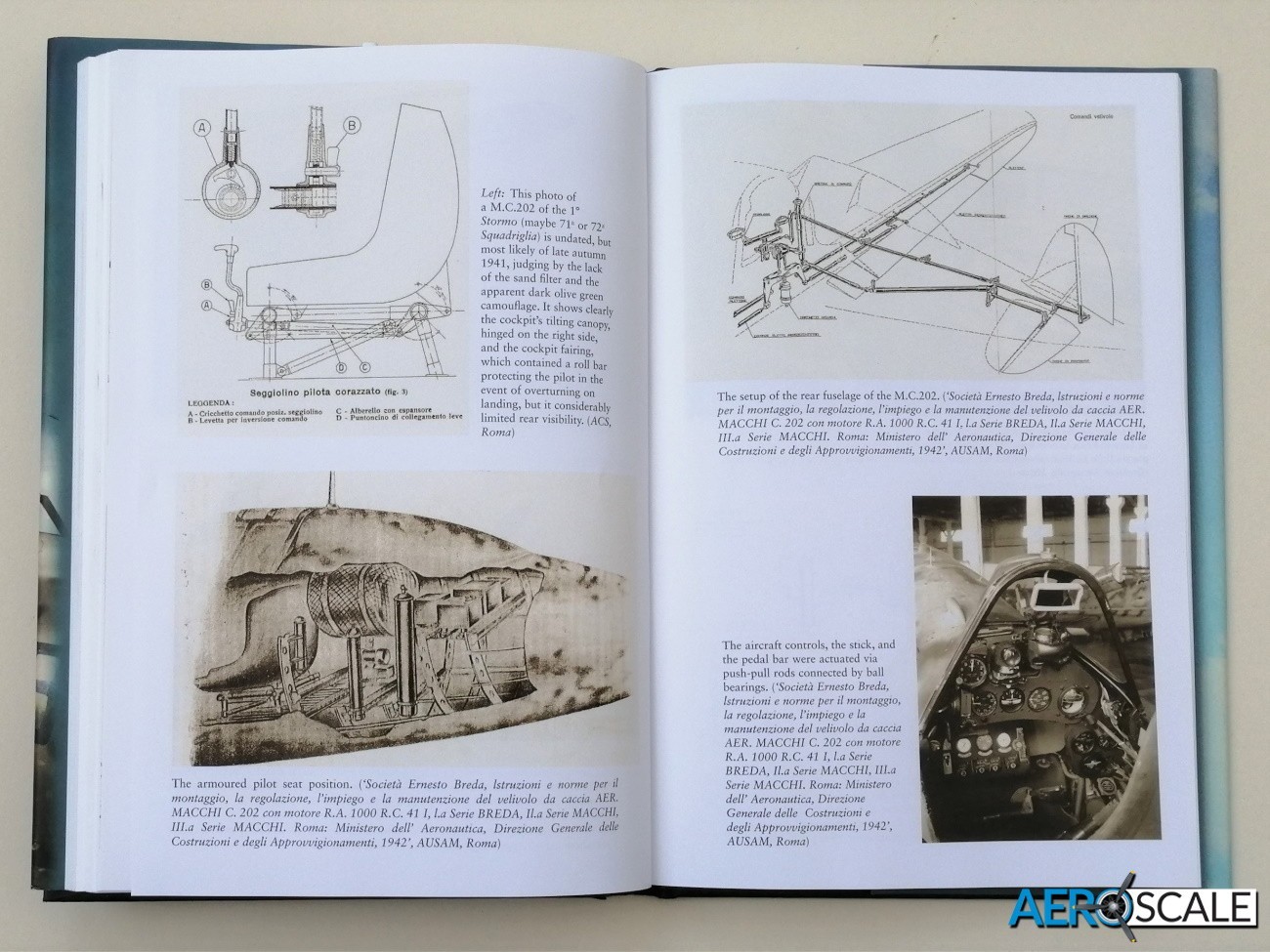
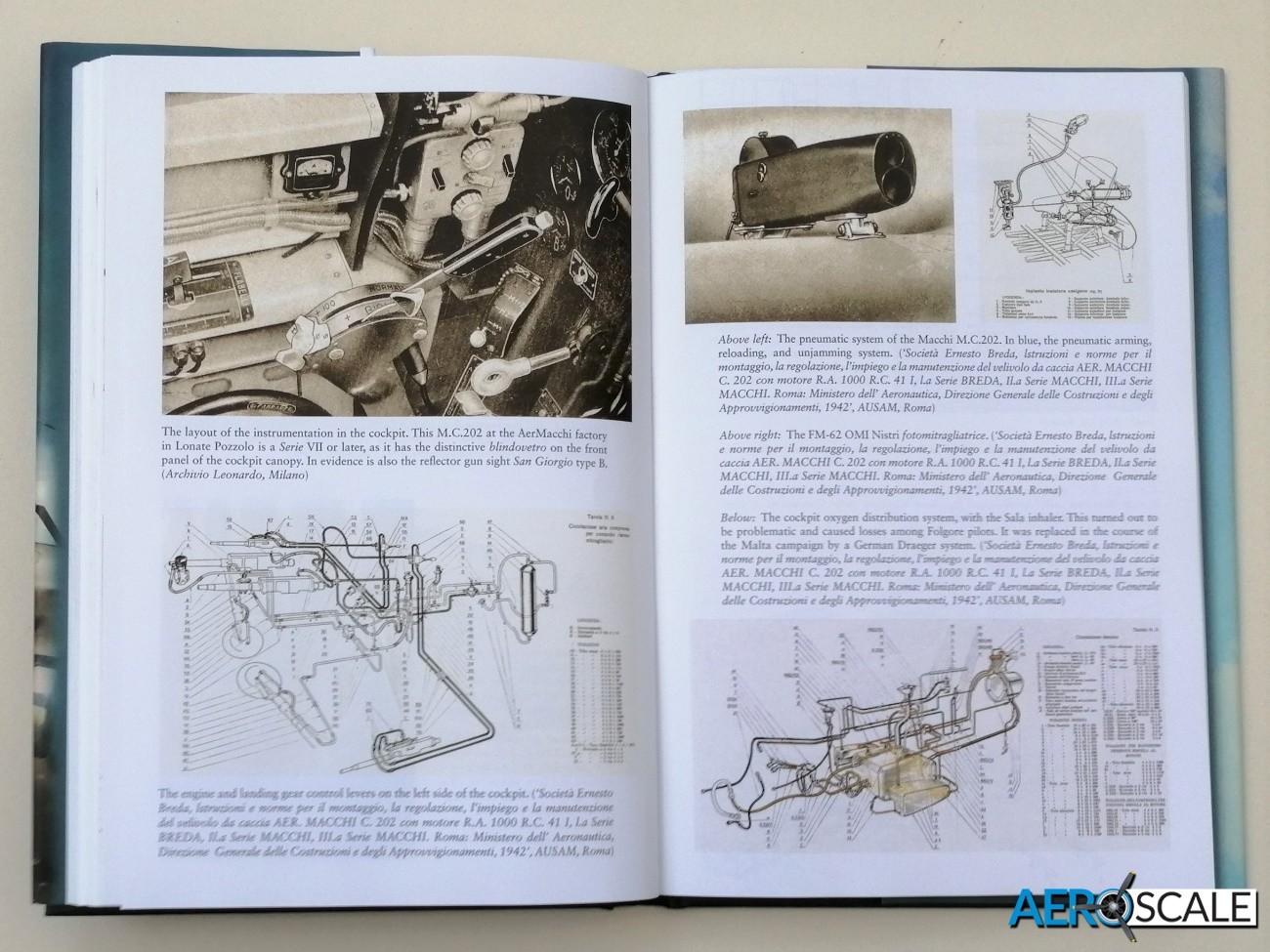
As you can see the images in the centre of the book are not wholly devoted to the Folgore. The quality of the photographic reproductions is excellent and worth looking at closely. Some are familiar. The images of the aircraft structure and technical notes are of great interesting. The experimentation with coolant radiator led to one test aircraft taking on the deep chin radiator similar to the P40, Typhoon and Tempest. Also of interest are the two types of engine mount found on the Folgore.
The authors claim the Folgore was the best fighter in the Regia Aeronautica. It may have been hugely popular with its pilots, but it was simply not fit for war.
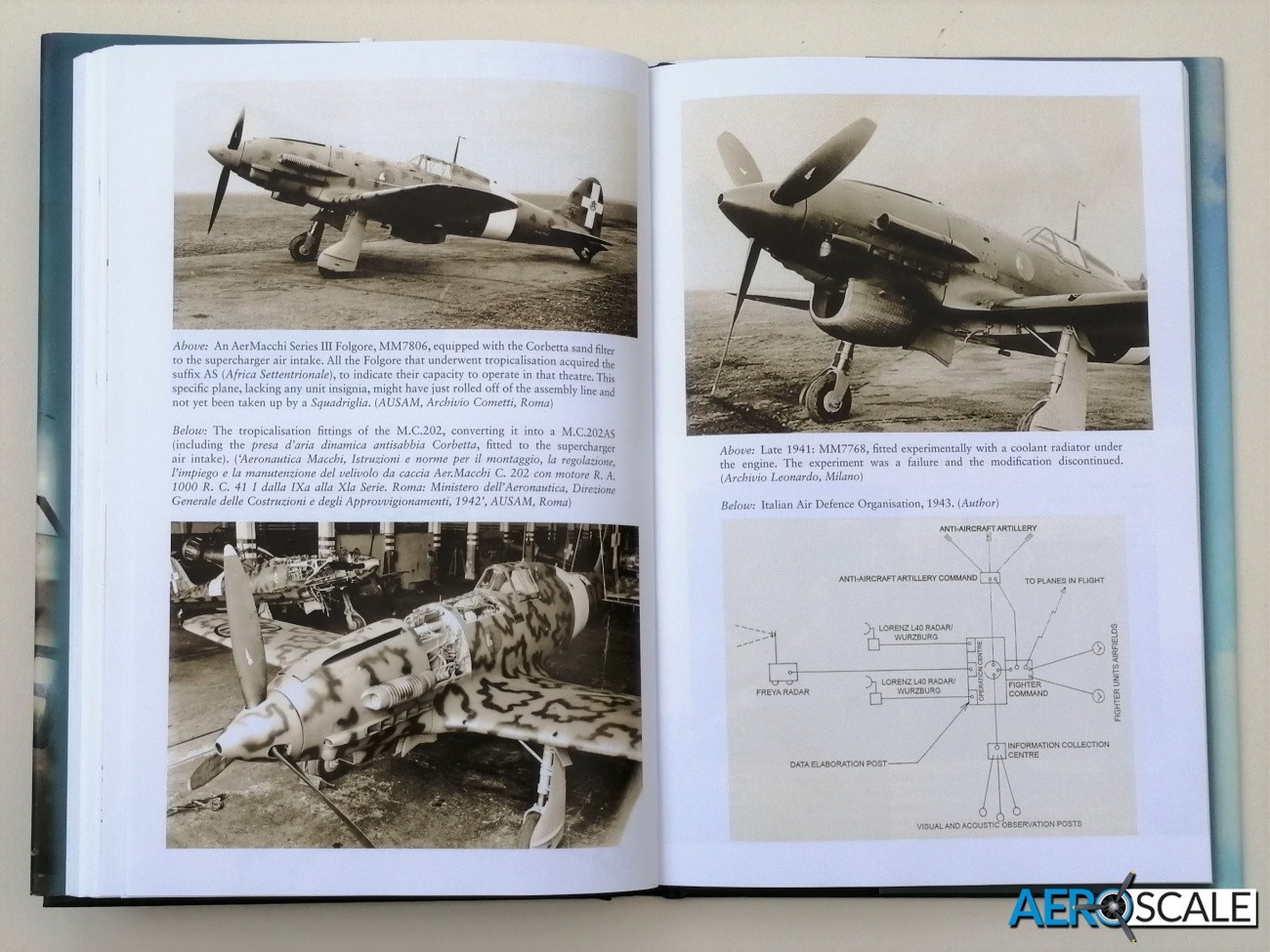
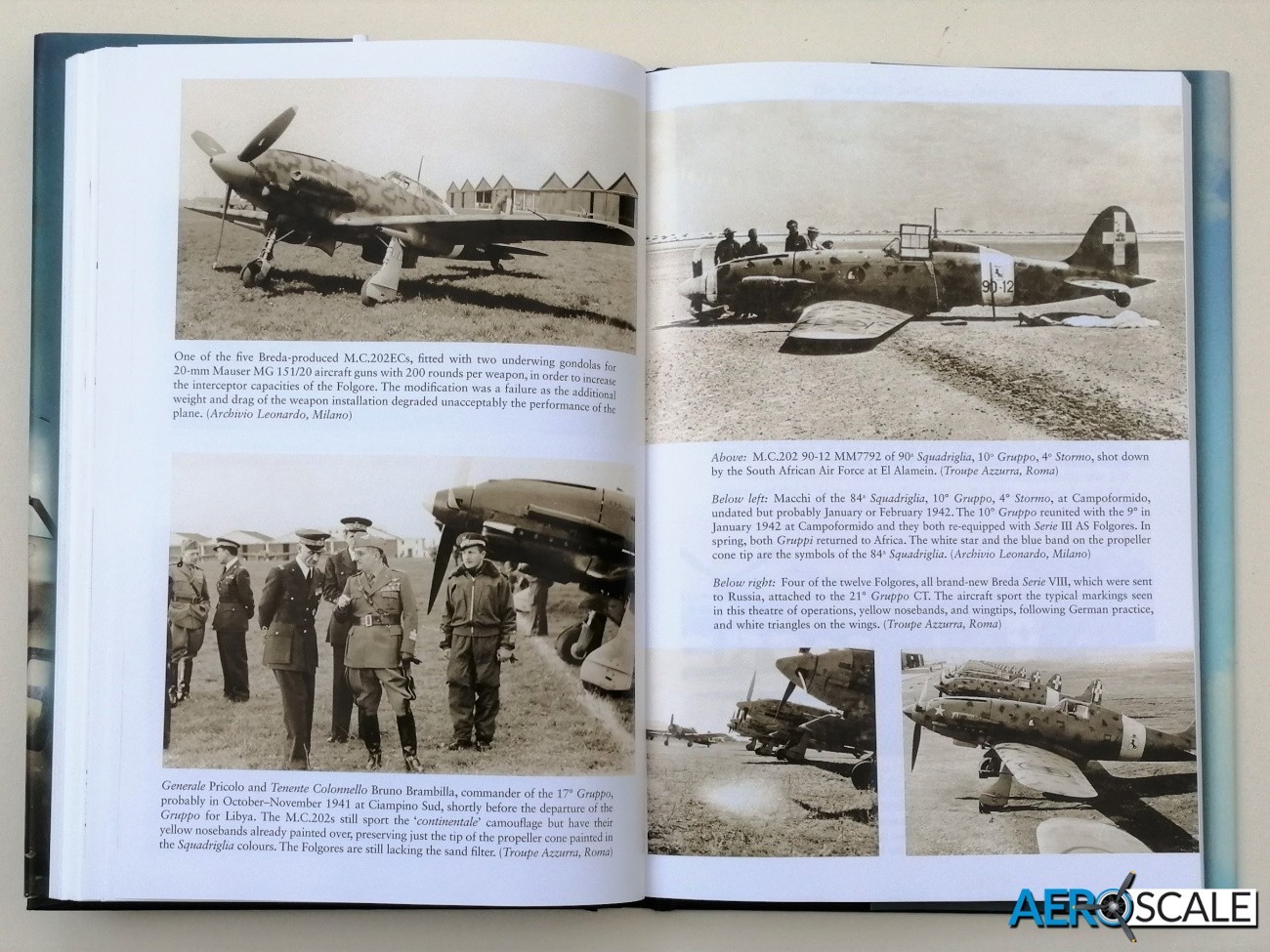
Conclusions
I was always curious why the intense rivalry with Italian in the Schneider Trophy, never had the same impact on Italian military aircraft as it did with British designs. This book does go along way to answer those questions. Although titled: Macchi C.202 Folgore is not just about arguably Italy’s best fighter. It’s a narrative on the state of the aviation industry in Italy before and during WWII. It discusses why it took so long to create a fighter capable of taking on up to date Allied fighters despite the country’s spectacular progress in the aviation science and engineering between the two World Wars. It also highlights the lack of understanding of modern [for WWII] fighter tactics by the hierarchy in the Regia Aeronautica. It is incredibly well researched with a nod towards the aviation historian. It’s a very good read, particularly the experiences of the men that flew the Folgore into battle. Highly recommended.
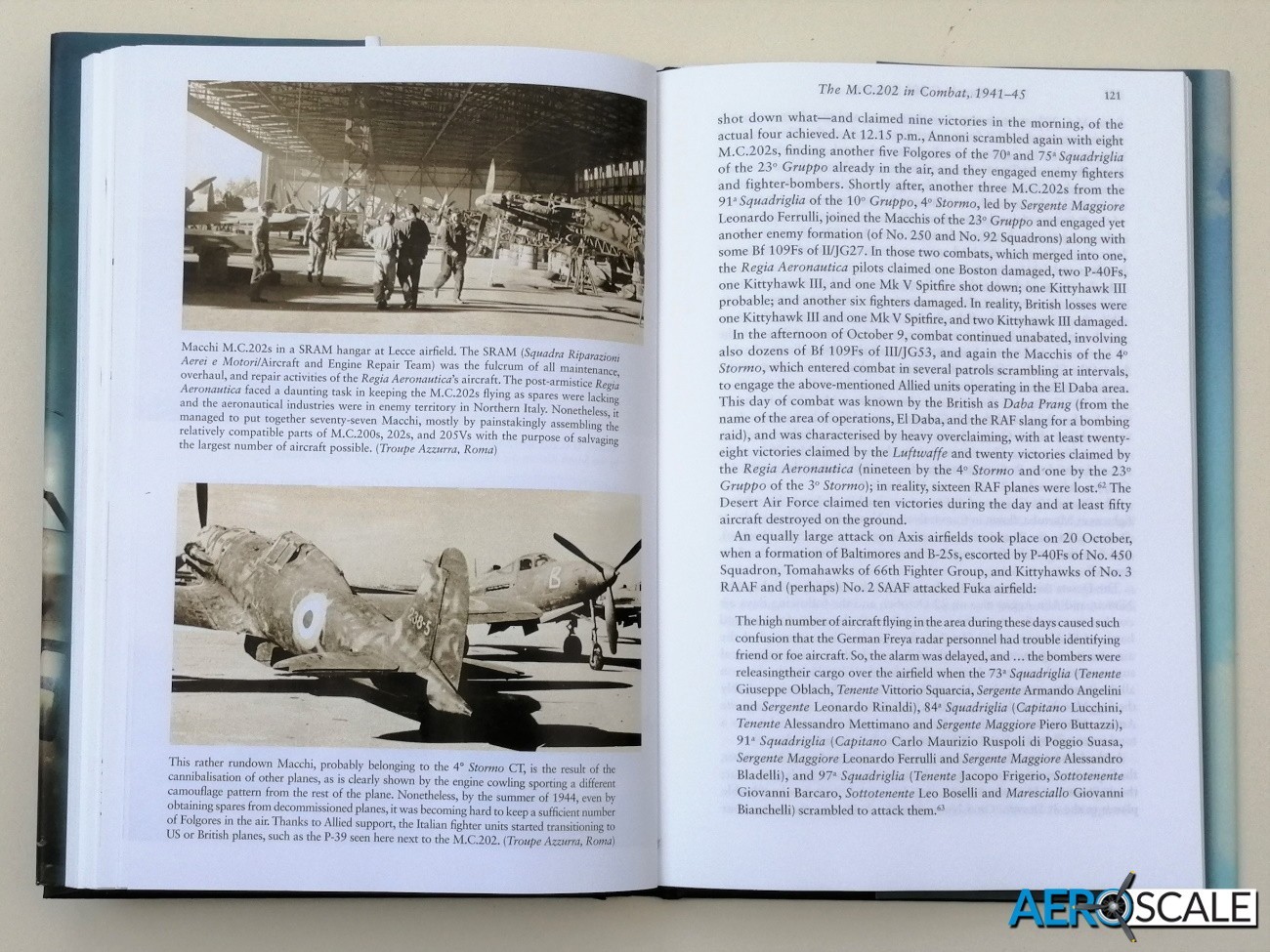
- Authors: Davide F. Jabes, Alessandro Romanello and Niccolo Tognarini
- ISBN 9781781558300
- FORMAT: 234 x 156 mm
- BINDING: Hardback
- PAGES: 256 pages
- ILLUSTRATIONS: 52 black-and-white and 2 colour photographs
Many thanks to Fonthill Media for the review sample
Please remember, when contacting retailers or manufacturers, to mention that you saw their products highlighted here – on AEROSCALE











